How to choose your chickens
From Black Rock to Buff Orpingtons, there’s a chicken breed to suit your garden

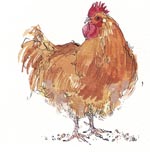
Which breed?
Black Rock This is really a brand, rather than a breed, as it's a commercial hybrid. This means that you can only buy the females and so can't breed from them, but they're hardy, handsome and reliable egg layers. The perfect starter bird and the foolproof trooper for the hen run. Light Sussex Due to its proximity to London, Sussex was a centre of table-poultry production in the 19th century, and this breed was developed there to put on plenty of meat with a good white skin. It has since become a dual-purpose variety, and, as well as the white-with-black-markings decorative scheme shown here, it can also be red or spotted.
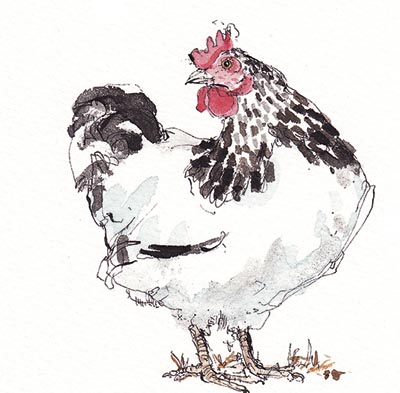
Pekin These come in bantam (miniature) form only. Round with long trousers, they look like little old grannies scratching around. Perfect for children, they're approachable and careful, and are prolific mothers. The chicks hatch complete with enchanting little trousers of their own. There are about a dozen colours-lavender, black cuckoo and brown are all lovely. And those trousers make them less destructive in garden borders.
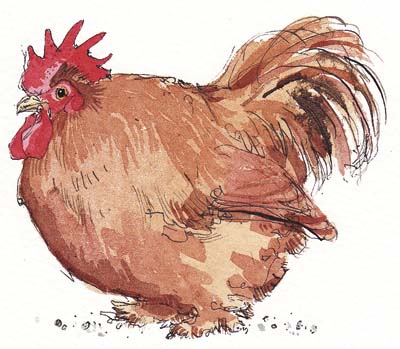
Buff Orpingtons The late Queen Elizabeth The Queen Mother was a devotee of these stately galleons of the hen run. The Orpington also comes in black and blue, lays (some) pale brown eggs and is a heavy bird. Bred primarily for show, they're charming, of steady temperament and make wonderful mothers.
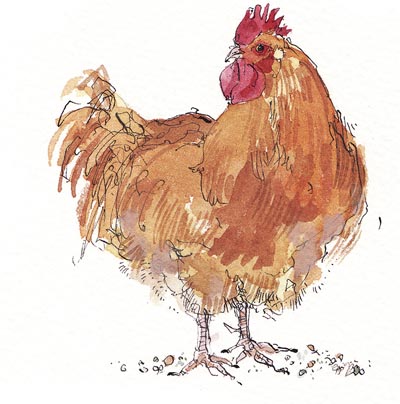
Poland A ridiculous and refined little bird, elegant and slim with a weeping willow of a topknot. They're inclined to be flighty, but I did once notice a group behaving most obligingly in Giffords Circus. They're poor layers of rather long, white eggs, but will add incredible glamour to your garden.
Silkie Preposterous-looking, with their black eyes hidden under a powder-puff crest and attired in feathers so fluffy that they look as though they're furry. They lay few eggs, but are comic, with chicks that are unputdownable. The silkie's weak point is that its Barbara Cartland outfit looks a fright in the rain. They have one more toe than other breeds, and are available in all the usual colours.
Maran A large hen with smart barred plumage (in the world of poultry fanciers, this pattern is, for obvious reasons, called cuckoo). The breed's raison d'être is that it lays the deepest of chestnut-brown eggs, but not nearly as many of them as the hyper-productive hybrids. The cocks have paler plumage, and never seem to fatten up properly.
Exquisite houses, the beauty of Nature, and how to get the most from your life, straight to your inbox.
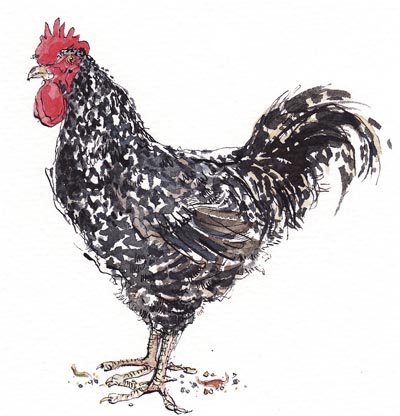
Wyandotte These cobby chickens-the cock has a short, stubby tail-come in a wide range of delicious colourways, the feathers variously laced with natty gold or silver edging. They're quiet, nice-natured, make good mothers and, like all true breeds, come in both sizes. The name derives from a tribe of American Indians, although as chickens crossed the Atlantic with Columbus (or even earlier), they were unlikely to have been a familiar feature around the tepee.
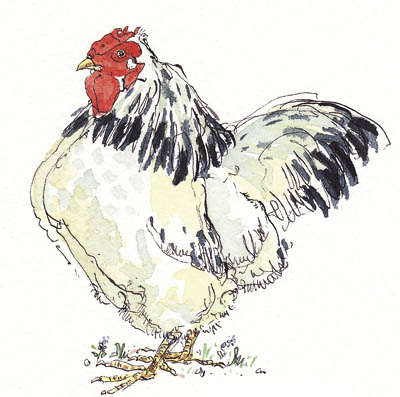
Old English Game My favourite garden bird. This is the dung-heap fowl of 18th-century paintings, and is as near to the native jungle fowl, progenitor of every domestic chicken, as one can get. The hen is modest browns, and the cock has a bright orange cape and red hackles with a long sickle tail in iridescent greeny-black. As a primitive breed, it's the hardiest of all, good at escaping predators and surviving on a basic diet. They're inclined to appear with a family of mottled cream chicks just when you'd givenup all hope. Go for bantam, as that size will do less damage in the garden.
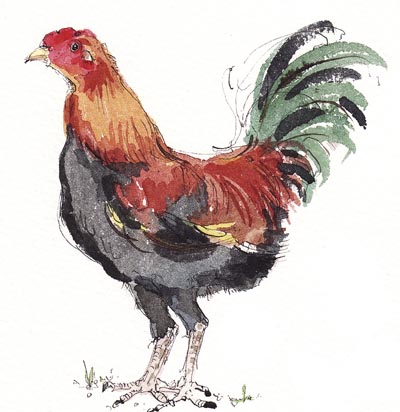
* Subscribe to Country Life and save over £50 a year
Country Life is unlike any other magazine: the only glossy weekly on the newsstand and the only magazine that has been guest-edited by His Majesty The King not once, but twice. It is a celebration of modern rural life and all its diverse joys and pleasures — that was first published in Queen Victoria's Diamond Jubilee year. Our eclectic mixture of witty and informative content — from the most up-to-date property news and commentary and a coveted glimpse inside some of the UK's best houses and gardens, to gardening, the arts and interior design, written by experts in their field — still cannot be found in print or online, anywhere else.
